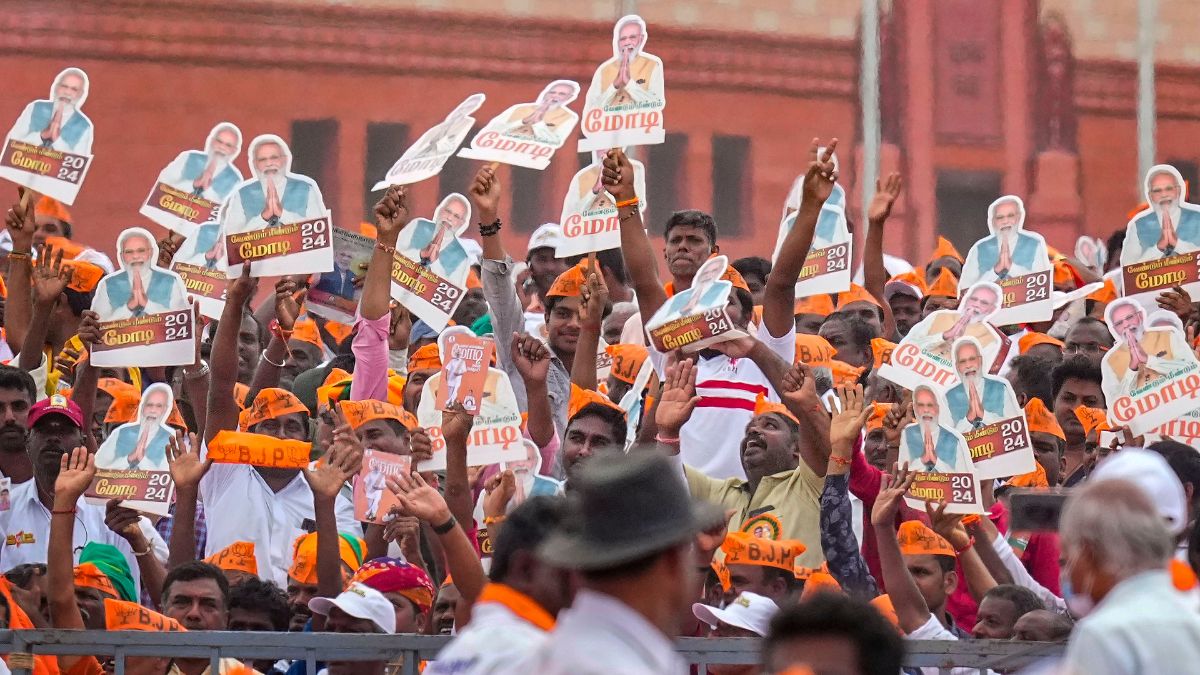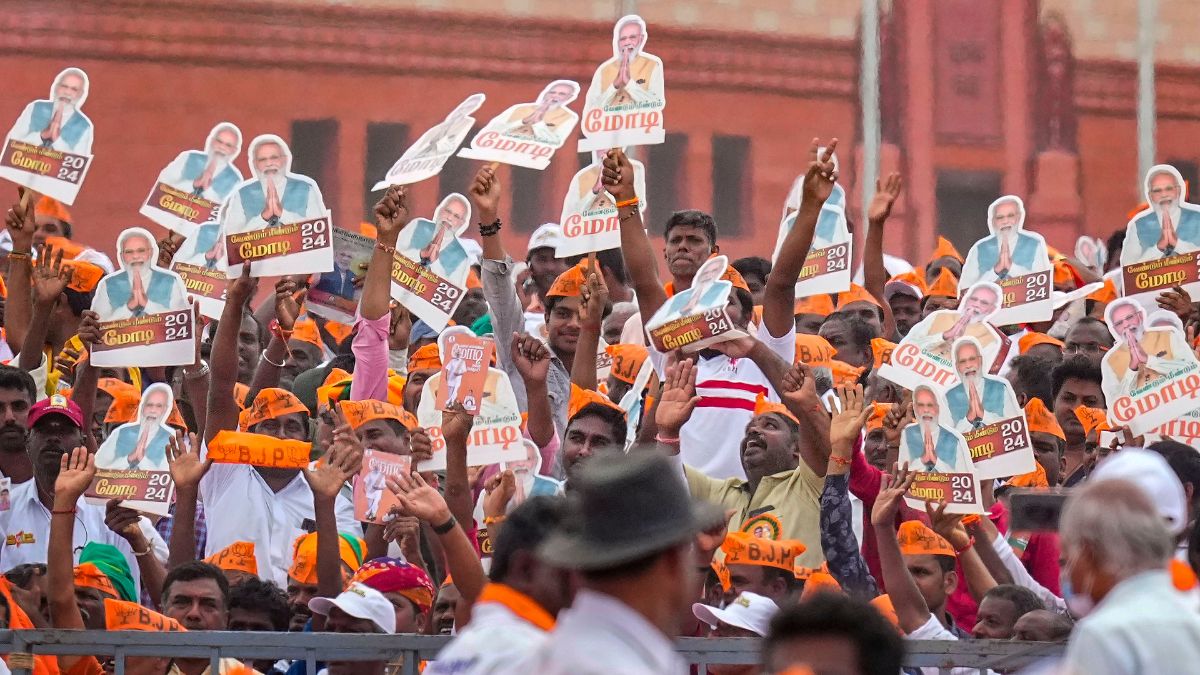Though based in Mumbai, food show director and researcher Shubhra Chatterji chose to spend the lockdown period looking after her busy doctor parents in Bhopal. For someone whose career revolves around going into people’s homes and shooting stories about food, the large garden and kitchen she had did little to dispel the emptiness she was feeling. To distract herself, she began to cook out of her mother’s old medical college notebook from the early 1980s. A few pages past the medical notes were a series of simple recipes for pickles, jams, cakes, halwas and puddings, handwritten by Chatterji’s maternal grandmother.
“One recipe had just three ingredients - sugar, orange and eggs. I wondered how it would work with nothing to give it body. I livestreamed my attempt, and that was when the idea struck – of doing something around old recipes,” explains Chatterji.
#HistoryOnAPlate , an Instagram Live series thus began, where at 4pm, five days a week, Chatterji invites people to talk about and make one old recipe. One got to see historian Rana Safvi prepare the Eid special qiwami seviyan; Sweta Biswal, who researches and documents lesser known recipes of Odisha demonstrated the pej, a ragi-based drink with fermented rice water; Dr Priyanka Biswas spoke about food from the tribal regions of Chhattisgarh, diving into seeds like purti and tivra which are consumed like dals. With close to 60 episodes and counting, the show is going strong.
“I realised that as content creators, we always have celebrities telling people stories. But here, we had regular people telling their own stories. And that’s where the connection began. People converse, reminisce, add in their personal experiences while many immediately try cooking the recipe they have learnt. It builds a community,” says Chatterji.
It was for the same love of community that inspired Ruchi Shrivastava, television producer and food researcher to start #KhanaKisseAurKahaniya , three days before Eid. “I have been upset over the animosity towards the Muslim community in the country and wanted a way to help people look beyond religion. I thought through food, we could trace their history and explore their cultures of celebration.” The venture has been a longstanding plan she finally got rolling during the lockdown. With multiple ethnic Muslim communities in the country, Shrivastava began to explore as many as she could, going beyond the common knowledge of Ramzan being about fasting and leading to a feast on Eid.
Her Memoni guest Afshaa Rajaqotwala explained how the Memons are a Muslim business community with large Jain and Marwari connections. And so, their Eid spread always has a vegetarian and Jain version of the traditional dishes served for their friends. In another episode, Taanishi Inam from Guwahati delved into the arrival of Islam in lower Assam and with it various communities such as the Goriyas, Moriyas, Maimals, Pangals (Manipuri Muslims) and others. She spoke of dishes like the decadent doodh pitha, a rice cake that is made during Ramzan.
Shrivastava, in fact, also brought Mona Arian from Iran on her series, who spoke on the elaborate use of saffron in their cooking, the differences in Muslim food in north and south Iran, and the Irani penchant for decorating dishes. She demonstrated this with six sherbets, each of which had ice cubes with colourful flowers frozen in them. Similarly, Zia Tabarak spoke extensively on the street food and Eid celebrations in homes in Pakistan.
“In each of the episodes, we worked on understanding geography, divisions based on food, the general things people eat, and then the food eaten during Ramzan. The idea was to gain maximum knowledge from them," says Shrivastava who had guests speaking of Bihari, Mappila, Kokni, Bhopali, and Ravuthar Muslims in addition to certain communities of Bangladeshi Muslims. For Shrivastava, who grew up in Bhopal and observed the tradition of iftari, this whole exercise was a journey of discovery, which gave her the discipline she needed during the lockdown.
It was this need for discipline and to work on something during the lockdown that drove Rushina Munshaw Ghildiyal, culinary expert and menu consultant, to conceptualise and go live with #SpiceChroniclesWithRMG .
Ghildiyal wanted to explore the use of spices in Indian kitchens because she believes that the information, available in our kitchens now, could be lost if not documented. After a few solo, context-setting episodes, most of her discussions moved in a natural sequence. While Dr Pushpesh Pant, food historian, began with the history of the usage of spices, Sangeeta Khanna, nutrition coach, culinary trainer and author, spoke on the functionality of spices and their basis in Ayurveda, leading to a discussion with Amrita Kaur, Ayurveda nutrition consultant and chef.
Moreover, Ghildiyal was also keen on exploring the masalas used in various regions. Therefore, her episodes open with a ‘discovery’ with her guests and then moves on to a discussion, ending with a recipe. “We have spoken about the thanda masala, a base of jeera-saunf and how it is used to create a balance in food. People were amazed to learn about how turmeric must be added into hot oil to increase the bioavailability of the dish it is going into. Additionally, we talked about the reasons behind spice mixes and cereal combinations that also help with nutrition," she says.
In separate conversations with Dr Pushpesh and food and travel writer Anubhuti Krishna, the mention of a digestive spice blend, bhuknu, was made. “Pushpesh spoke of a bhuknu with 36 ingredients which he had heard of but never tried. Then a listener, Deepa Chauhan, went back and found a recipe in an old book, with the permission of the family elders made it, and put in the public domain. It came close at over 20 ingredients,” says Ghildiyal of the events her show has inspired.
Inspiring conversations around food and increasing engagement was also the plan for Anubhav Sapra of Delhi Food Walks, who started DFW Talks during the lockdown. “It began with street food-based live interaction series on our Instagram handle but eventually morphed into a very interesting Facebook Live series with stories and anecdotes related to food, people, and culture,” explains Sapra.
Over the course of the sessions, both Sapra and his audience have been amazed by the rich insights gained into regional cuisine, much of which is still uncharted territory. “We looked beyond the wazwan from Kashmir and discovered similarities in cross-cultural cuisine like that of Pakistan and Bangladesh. We were virtually taken through the streets of Lucknow and learned the nuances of Sindhi and North Eastern cuisines as well. The discussions included perspectives on food, travel, health, nutrition, culture, culinary history, virtual food tour and, Ayurveda,” he adds.
Multiple perspectives or the understanding a single ingredient, in many ways, was also the idea behind the A-Z of #KnowYourIngredients series started by Dr Kurush F Dalal, archaeologist and culinary anthropologist. “It is a series of roughly hour-long discussions on an ingredient, its history, archaeology, anthropology, and all other possible factors. It also includes uses, distribution and dissemination patterns, and fun facts. The A-Z nature is simply a way of introducing 26 disparate ingredients crossing language, geography and usage,” he explains.
His talks on ube, knolkol and eggplant, as well as those on pork, surprised him with the traction they received. “I made new friends, learnt a lot from the comments, was delighted to see people try out things and ingredients they had never tried before.”
These shows have generated a wealth of information around food in the last couple of months, thanks to live interactions and the ability of the audience to interact with the expert in real time. Going forward, each of the hosts plans to collate their bodies of work into easily accessible public archives. Chatterji wants to condense her series with highlights and the recipe into 15 minute episodes while Shrivastava will edit her series into concise episodes and share them on multiple platforms. Similarly, Sapra has decided to extend the ambit of his show and will be coming up with a new YouTube channel called DFW Explore. On the other hand, Dalal plans to tell shorter series and would like to someday turn his sessions into text. Ghildiyal too plans to consolidate her talks into a research resource but the ‘how’ and ‘when’ will have to wait a bit, she says, as she just wants to enjoy her journey right now.


)




)
)
)
)
)
)
)
)